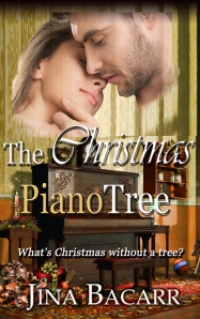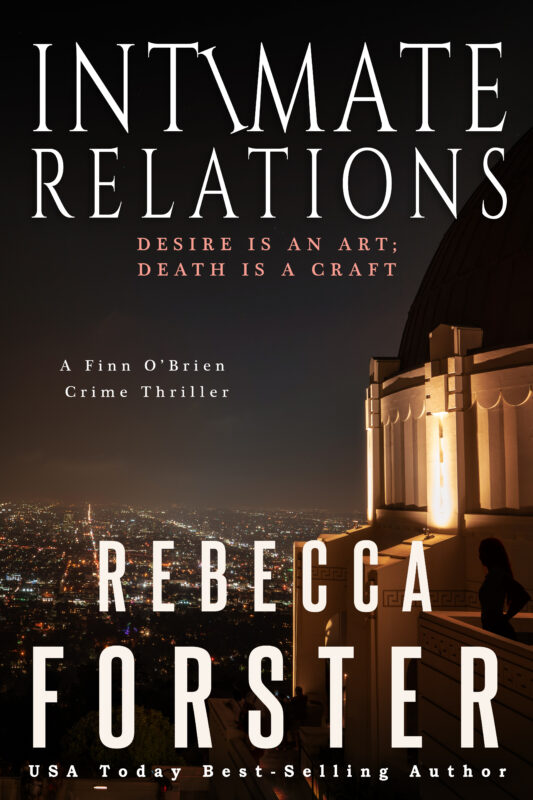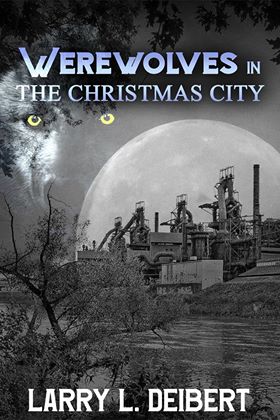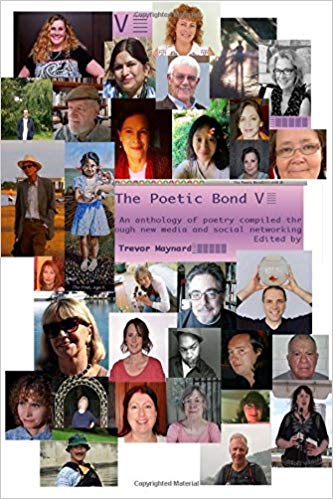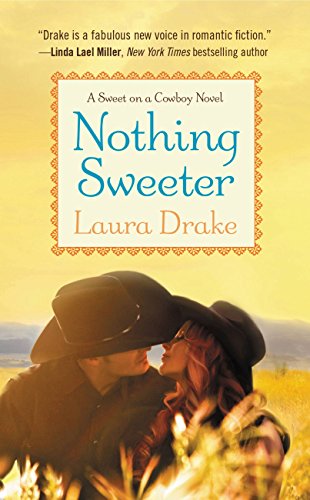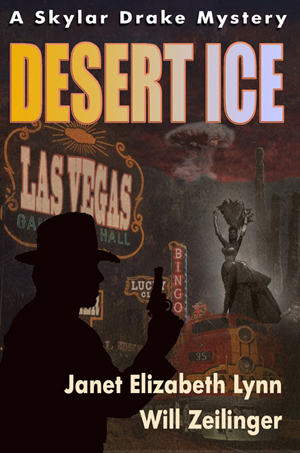What’s for Dinner? Depends on the Century #Food #History #Research by @LyndiLamont
November 16, 2017 by Linda McLaughlin in category The Romance Journey by Linda Mclaughlin tagged as food, history, Medieval Underpants, research, ThanksgivingSince Thanksgiving is a week away, it’s only natural that many of us are thinking about food. I love autumn and all the wonderful dishes that make up the traditional Thanksgiving feast, but did you know how many of them are New World foods?

Roasted Turkey On Harvest Table – c. evgenyb – license from Bigstock.com
The food supply expanded when Columbus “discovered” the New World. There were no potatoes, yams, tomatoes, pumpkins turkeys or maize (Indian corn) in the Middle Ages.
In Medieval Underpants and Other Blunders: A Writer’s (& Editor’s) Guide to Keeping Historical Fiction Free of Common Anachronisms, Errors, & Myths, author Susanne Alleyn takes a swipe at Cinderella’s pumpkin carriage in the Disney movie. The carriage it doesn’t bother me so much, since Disney’s Cinderella is apparently set in the 18th century, if the gowns are anything to go on. At least it’s an improvement on the scene in Snow White and the Seven Dwarfs where the Huntsman leads Snow White into an American forest. I’m pretty sure I spotted a raccoon and an alligator. (Known fact: You can’t trust Hollywood when it comes to research.)
There was also no chocolate, no tea and no coffee in the Middle Ages. Peasants drank beer at every meal. The nobility drank wine. The introduction of coffee and tea in the 17th century helped to sober up Europe for the Industrial Revolution, thank goodness. Even the sober Pilgrims and Puritans drank beer in the 1600’s. If you’re writing a Medieval romance, don’t show your characters drinking tea, even if it’s herbal. The word “tea” comes from the Chinese, and didn’t enter the English language until around 1655. Herbal infusions, sometimes called tisannes, were mainly used for medicinal purposes.
Chocolate is native to the Americas, so the Spaniards were the first Europeans to encounter it. It became popular at court after the Spanish added sugar or honey to sweeten the natural bitterness. From there, chocolate spread through Europe in the 1600’s, and how thankful I am that it did. The best hot chocolate I’ve ever had was the dark, molten variety you find in France.

coffee & chocolate, image licensed from Deposit Photos
Coffee drinking started in Arabia in the middle of the 15th century and had spread to Europe in the 16th century. It became more popular after 1600 when Pope Clement VIII declared it a “Christian” beverage. When Britain cut off America’s tea supply during the War of 1812, Americans turned to coffee and we’ve been a coffee-drinking nation ever since.
Tea comes from Asia and was introduced to Holland in 1610, in common use by 1675; introduced to England about 1660, where it steadily increased in popularity. The ritual we know as afternoon tea didn’t start until the 1840s. Afternoon tea was for the idle rich and includes finger sandwiches, scones and pastries. High tea, which isn’t nearly as grand as it sounds, was the name for the evening meal used by the working class and features a hot dish like a meat pie or stew.
Happy Thanksgiving!
Linda McLaughlin w/a Lyndi Lamont
Website: https://lindalyndi.com
Is Your ‘Plate’ Too Full? by @Rebecca_Forster
November 15, 2017 by Rebecca Forster in category The Write Way by Maureen Child tagged as Craft, editing, solutions, writing Today my November plate is officially too full.
Today my November plate is officially too full.
It has been piled high with cold, flu conferences, a last minute, out of country speaking engagement and now a medical screening that needs a follow-up. Of course, there are also everyday things that pile on to the plate: bills, calls from my sons, the tennis league I belong to, dinner to cook and bathrooms to clean. I’m not complaining. This is all just life and good stuff if you take the cold and medical appointments out of the equation. Still, filling out my calendar and trying to figure out how I’m going to fit quality writing time in the schedule made me think about the craft of writing a novel. The question on my mind was how much is too much before a reader throws up her hands and pushes the literary plate away?
As a thriller writer, I love to go over the top. Unfortunately, I can get a bit too energetic and take the technique to crazy extremes. It’s a fault. No, it’s worse than a fault. It’s a sin to be so involved with own words that I forget my job is to entertain not challenge someone to wade through my excesses. When I do go overboard, I am giving my readers a reason to push away the literary plate I have served them.
Luckily, there are remedies for ‘too much’ writers like me. In real life we say no to many things, so let’s start saying it in our fiction. Here are three ways to figure out if you just served your reader a plate that is too full.
[tweetshare tweet=”Three ways to figure out if you just served your reader a ‘plate’ too full by @Rebecca_Forster” username=”A_SliceofOrange”]
Echo: A particularly inspired turn of phrase, description or character quirk is a thing of beauty. Constant use of the same phrase or description or a continual reminder of the quirk is an annoyance. Readers are smart and imaginative. They will get it.
Blow-by-Blow : No pun intended, but sex scenes are more effective and dramatic if they are evocative rather than clinical. The same rule of thumb applies to shootouts, character travel or any scene that stops the reader and forces them to linger without a point. Move the story forward using varied sentence structure and only critical physical descriptions.
Cast of Thousands: Have you ever tried to find a friend in a crowd? It’s impossible because all you can see is a blur of humanity. The same thing happens to a reader if there are too many characters populating your book. Think of your book as a play. Characters may come and go but the ones we care about should always be center stage.
While you edit look for the echo, the blow-by-blow and the cast of characters and adjust the emphasis, streamline the structure and your literary plate will go from too full to too fabulous.
Rebecca
November Featured Author: Sally Paradysz
November 13, 2017 by marianne h donley in category Featured Author of the Month tagged as BWG, Featured author, Memoir, Sally Paradysz, Short Stories
In Memory of Sal
October 29, 2017
Emily P. W. Murphy
Two weeks ago, we unexpectedly lost a very dear friend of mine. Today her friends and family are gathering together to remember her life. I’m sorry I couldn’t be there.
It has taken this long for me to get my mind around writing about our loss. Sal was a remarkable, inspiring, enigmatic, gentle, loving soul. She inspired so many, and made every one of her many, many friends feel special, valued, and loved. I am so sorry for the loss felt by her family and friends, but also truly sorry for those of you who will not get to meet her.
Sal had a lot to do with who I am today. I’ll never forget the morning she wrote asking if I would consider professionally editing her memoir. This was before we were great friends. She felt shy even asking me, when in fact she was offering me an incredible opportunity. See, this was before I identified myself as an editor– honestly, before I even felt truly comfortable saying I was a writer. Yet, she trusted me to help shape the way she presented her life story to the world. What an honor. As we worked together, Sal’s faith in me helped me find faith and confidence in myself.
[tweetshare tweet=”In Memory of Sal by @EmilyPWMurphy ” username=”A_SliceofOrange”]
Her memoir, From Scratch, is now a publication that has reached countless readers. Sal’s commitment and hard work produced a book that is so much more than just an interesting story from her life, but also a source of inspiration for others. If you haven’t read it yet, I recommend you do so. I’ve read it more times than I can count (in all of its various incarnations) but you can bet I’ll be rereading it in the near future. Once my heart can handle it.
I miss you, Sal. ♡
Emily

Sally Paradysz wrote from a book-lined cabin in the woods beside the home she built from scratch. She was an ordained minister of the Assembly of the Word, founded in 1975. For two decades, she provided spiritual counseling and ministerial assistance. Sal completed undergraduate and graduate courses in business and journalism. She took courses at NOVA, and served as a hotline, hospital, and police interview volunteer in Bucks County, PA. She was definitely owned by her two Maine Coon cats, Kiva and Kodi.
Sal is missed by all who knew her.
Loss for Words by @DeniseMColby
November 12, 2017 by Denise M. Colby in category The Writing Journey by Denise Colby tagged as ideas, NaNoWriMo, research, StorytellingI’m at a loss for words.
Me. Someone who can talk incessantly. Who never seems to max out my words each day.
Why is it when I don’t have time to write, ideas and words flow in my mind? When I’m driving, in the shower, at a kids event. It seems that I have no issue coming up with blog post ideas and story ideas to explore or messages to write. I’m just not in a position to actually write them.
[tweetshare tweet=”Why is it when I don’t have time to write, ideas and words flow in my mind?” username=”A_SliceofOrange”]
But today? Nothing. I even left my house to work specifically on my NaNo work and write my blog post and guess what? My brain is mush. I want to curl up and take a nap.
Actually I think it’s because I’m exhausted. My bandwidth is maxed. And there’s good reason.
My husband and I are coaching my younger son’s robotics team. We have our FIRST Lego League tournament this weekend and we’ve been pulling more than double shifts.
We have six 7th graders on our team. Our robotics table is a large table with Lego missions all over it and our robot is made out of Lego’s. We program it to accomplish as many missions as possible in 2 1/2 minutes. Pretty cool.
But wait, there’s more.
 We have a five minute project presentation as well. Each year is a different theme and we have to find a real world problem within the theme and innovate a new solution. This years theme is Hydro Dynamics. Anything to do with human use of water.
We have a five minute project presentation as well. Each year is a different theme and we have to find a real world problem within the theme and innovate a new solution. This years theme is Hydro Dynamics. Anything to do with human use of water.
As the kids did their initial research, they stumbled onto how much water is used to make shirts. The information we found out is fascinating. Textile mills all over the world use a process called Wet Processing to shape, color and finish clothing. Not only do they use A LOT of water, the runoff is full of chemicals, so the water is not reused and pollutes the environment.
There are a number of solutions out there but there are over 15,000 mills in China alone. So getting each and every one to change takes time and money. And honestly their isn’t enough incentive to change.
Some brands such as Nike, Adidas, Levi and Patagonia are doing something about it and we reached out to several of them. Eileen Fisher gave us the most detailed information. We talked with their R&D chemist and learned more than we could ever put into our presentation. But she gave us the idea we needed for our solution.
See most of us don’t know water is used to make shirts. So awareness is key. If you can change people’s buying habits, it just might be the catalyst for real change. If we ask our favorite brands if they track and measure their water use, they in turn will ask their suppliers.

So the kids created a website to build awareness and tell people what they can do to help. We tie-dyed our own shirts and learned first-hand how much water is needed to rinse off the dye. We made word searches and coloring pages, as well as a glossary page of all the terms they learned over the past ten weeks. They showed to it to their friends, teachers and families and asked them to take a survey. Out of 38 respondents, 61% didn’t know that water was used to make shirts and 68% said they would change how they shop. We took all this information and put it into a presentation. And the kids created a fun skit to go with it.
They decided to call themselves Fiber Friends (think justice league – Fiber Friends Unite). Water waster owns a textile plant and wastes water. Batman, Flash, Blue Lantern, Aquaman and Wonder Woman (we have one girl and 5 boys on the team), capture Water Waster and upgrade the plant to save water. They do a great job and have lots of fun at the same time.
What I love about it is it’s just another form of storytelling and I’ve been able to help guide them in creating it. They learn so much with this entire program – research, problem solving, presentation skills, working together as a team.
I’ll have to update you on how we do, but in the meantime if you want to take a look at their website, here’s the link: https://ffunite.wixsite.com/fiberfriendsunite
Hugs & Blessings,
Denise

Although new to the writing fiction world, Denise Colby has over 20+ years experience in marketing, creating different forms of content and copy for promotional materials. Taking the lessons learned from creating her own author brand Denise M. Colby, Denise enjoys sharing her combined knowledge with other authors.
If you are interested in a marketing evaluation and would like help in developing a strategy for your author brand you can find out more here http://denisemcolby.com/marketing-for-authors/
Veterans Day: a soldier with PTSD finds his way home by way of a Christmas Piano Tree
November 11, 2017 by Jina Bacarr in category Jina’s Book Chat, Writing tagged as Army, Christmas, holidays, military romance, PTSD, soldier, tree, veteran, Veterans DayVeterans Day is for healing…let’s not forget our wounded warriors who suffer not only the physical pains of war, but the mental as well.
PTSD was first talked about during the Civil War by physicians who described it as nostalgia, while others believed it was a disturbance of a soldier’s mental capabilities caused by severe trauma to the brain.
After World War II, John Huston directed a documentary called Let There Be Light, about the care of soldiers with mental disturbances suffered during wartime.
These are wounds you don’t see.
But they are very real to the soldier with PTSD.
In my holiday romance, “The Christmas Piano Tree,” the hero, Sgt. Jared Milano, is a wounded warrior suffering from PTSD from his last mission in Afghanistan:
“His brain went into freefall and he couldn’t stop it. No matter how hard he tried, how much he squeezed his mind, the memory stayed lost in a thick, suffocating fog swirling around in his head.
Lost.
Dead and forgotten.
Angry, frustrated, he tried to reach out and grab it, but whatever his buddy said to him before he died remained silent and still in his mind.
When would he remember? When?”
================
“The Christmas Piano Tree” is the story of a pretty young war widow who re-discovers the magic of the holiday season with the help of a homeless vet and an old piano.
I’ll never forget the Christmas I spent stationed overseas in a small town in Italy. The hot chocolate and cookies I baked and gave to the soldiers who signed up for my Christmas Eve Midnight Mass tour. Off we went on that wintry night in an old military school bus…
We were a motley group of military and Special Services personnel attending the service in a medieval cathedral that was cold and damp, but filled with song and hope for a better future.
Many of those men had seen the horrors of combat and suffered from PTSD (what we called DSS–delayed-stress syndrome–back then). Their stories as they told them to me have stayed with me always…
Thank you for spending part of your Veterans Day here with me. We thank all those who have served for their courage and bravery in keeping us and our families safe. God bless you.
~Jina
The Christmas Piano Tree is available on Kindle and KindleUnlimited.
www.facebook.com/JinaBacarr.author
https://twitter.com/JinaBacarr
http://www.pinterest.com/jbacarr
Affiliate Links
A Slice of Orange is an affiliate with some of the booksellers listed on this website, including Barnes & Nobel, Books A Million, iBooks, Kobo, and Smashwords. This means A Slice of Orange may earn a small advertising fee from sales made through the links used on this website. There are reminders of these affiliate links on the pages for individual books.
Search A Slice of Orange
Find a Column
Archives
Featured Books
INTIMATE RELATIONS
A woman in a window. A cop out of his element. A crime of unimaginable passion.
More info →WEREWOLVES IN THE CHRISTMAS CITY
Bethlehem, PA has a werewolf problem.
More info →THE POETIC BOND V
Celebrating Five Years of Global Poetry Poetry that binds, Poetry that is NOW, Poetry that BONDS.
More info →DESERT ICE
Sin City in 1955, where the women are beautiful and almost everything is legal-
More info →Newsletter
Contributing Authors
Search A Slice of Orange
Find a Column
Archives
Authors in the Bookstore
- A. E. Decker
- A. J. Scudiere
- A.J. Sidransky
- Abby Collette
- Alanna Lucus
- Albert Marrin
- Alice Duncan
- Alina K. Field
- Alison Green Myers
- Andi Lawrencovna
- Andrew C Raiford
- Angela Pryce
- Aviva Vaughn
- Barbara Ankrum
- Bethlehem Writers Group, LLC
- Carol L. Wright
- Celeste Barclay
- Christina Alexandra
- Christopher D. Ochs
- Claire Davon
- Claire Naden
- Courtnee Turner Hoyle
- Courtney Annicchiarico
- D. Lieber
- Daniel V. Meier Jr.
- Debra Dixon
- Debra H. Goldstein
- Debra Holland
- Dee Ann Palmer
- Denise M. Colby
- Diane Benefiel
- Diane Sismour
- Dianna Sinovic
- DT Krippene
- E.B. Dawson
- Emilie Dallaire
- Emily Brightwell
- Emily PW Murphy
- Fae Rowen
- Faith L. Justice
- Frances Amati
- Geralyn Corcillo
- Glynnis Campbell
- Greg Jolley
- H. O. Charles
- Jaclyn Roché
- Jacqueline Diamond
- Janet Lynn and Will Zeilinger
- Jeff Baird
- Jenna Barwin
- Jenne Kern
- Jennifer D. Bokal
- Jennifer Lyon
- Jerome W. McFadden
- Jill Piscitello
- Jina Bacarr
- Jo A. Hiestand
- Jodi Bogert
- Jolina Petersheim
- Jonathan Maberry
- Joy Allyson
- Judy Duarte
- Justin Murphy
- Justine Davis
- Kat Martin
- Kidd Wadsworth
- Kitty Bucholtz
- Kristy Tate
- Larry Deibert
- Larry Hamilton
- Laura Drake
- Laurie Stevens
- Leslie Knowles
- Li-Ying Lundquist
- Linda Carroll-Bradd
- Linda Lappin
- Linda McLaughlin
- Linda O. Johnston
- Lisa Preston
- Lolo Paige
- Loran Holt
- Lyssa Kay Adams
- Madeline Ash
- Margarita Engle
- Marguerite Quantaine
- Marianne H. Donley
- Mary Castillo
- Maureen Klovers
- Megan Haskell
- Melanie Waterbury
- Melisa Rivero
- Melissa Chambers
- Melodie Winawer
- Meriam Wilhelm
- Mikel J. Wilson
- Mindy Neff
- Monica McCabe
- Nancy Brashear
- Neetu Malik
- Nikki Prince
- Once Upon Anthologies
- Paula Gail Benson
- Penny Reid
- Peter Barbour
- Priscilla Oliveras
- R. H. Kohno
- Rachel Hailey
- Ralph Hieb
- Ramcy Diek
- Ransom Stephens
- Rebecca Forster
- Renae Wrich
- Roxy Matthews
- Ryder Hunte Clancy
- Sally Paradysz
- Sheila Colón-Bagley
- Simone de Muñoz
- Sophie Barnes
- Susan Squires
- T. D. Fox
- Tara C. Allred
- Tara Lain
- Tari Lynn Jewett
- Terri Osburn
- Tracy Reed
- Vera Jane Cook
- Vicki Crum
- Writing Something Romantic
Affiliate Links
A Slice of Orange is an affiliate with some of the booksellers listed on this website, including Barnes & Nobel, Books A Million, iBooks, Kobo, and Smashwords. This means A Slice of Orange may earn a small advertising fee from sales made through the links used on this website. There are reminders of these affiliate links on the pages for individual books.


























